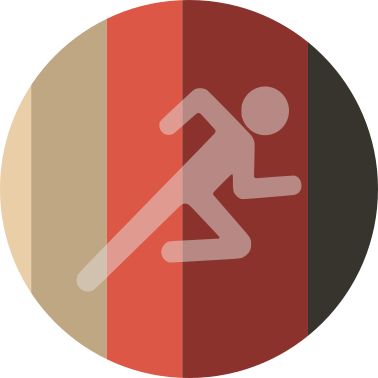Training system to help prevent running injuries
- Euan Ross

- Dec 6, 2019
- 3 min read
Updated: Nov 25, 2022

I've been running for many years and have made several training mistakes which have ultimately led to injury and time out from running! I've not had sufficient rest and recovery following strenuous workouts. I've bitten off more than I can chew and upped the mileage too much, too soon. I've not stretched enough. Made poor footwear choices for the terrain. Tripped and stumbled due to tiredness, a lack of coordination and agility. Overly relied on stronger muscle groups due to strength imbalances. And toughed it out and run through niggles and pains, not listening to my body when it's trying to tell me something more serious is just around the corner.
All of which I've researched, studied, learned from and addressed for myself. I now train very differently. All of which has translated through to fewer injuries, more time running and significant improvements to fitness levels and most recent race performances.
When I became a Personal Trainer and set up RUN3SIXTY, I pulled together everything I'd learned over the years into a systematic approach to training that I hope will help my clients improve their running and sustain fewer injuries.
The RUN3SIXTY Personal Training System covers 6 inter-related principles. Each one is reliant on the other, although they do not necessarily flow from one to the other. You can find out more information on my website, but in summary they are:
Aerobic Efficiency: a fundamental step to maximising your endurance and running ability is to maximise your aerobic base. It's actually quite easy to do, it just takes patience and possibly a radical mind shift on your part. You just need to gradually up your volume and slow right down. Training in the correct heart rate zones is critical, which is why I recommend training with a HR monitor with an established Aerobic Threshold. These easy miles also put less stress on the body, helping avoid injuries.
Functional Strength: this is about a strong, stable core. Balance across your muscle groups. Teaching the right muscles to fire, in the right sequence, with the appropriate force. This is the purpose of Strength and Conditioning work. It provides you with a strong foundation to move your body more efficiently, enables your body to cope with a heavier training load, more intense muscular endurance and speed work. It will also minimise over-use injuries through improved running form.
Muscular Endurance: the ability of your muscles to repeatedly contract against resistance. The longer the distance, the heavier the requirement. Slowing towards the end of a run, the burn and heavy legs are all symptoms of poor local muscular endurance; and a great recipe for injury. So specific exercises, primarily working the propelling muscle groups, should be an important part of your training programme.
Speed Strength: these are the higher intensity interval runs and hill sprints. Essential to increase your Anaerobic Threshold, improve your pace, test your race pace and are an additional tool to develop local muscular endurance. These should be used judiciously across your training volume. Too much of these will actually erode your aerobic efficiency and ultimately you'll see a deterioration in your performance. Working with a Personal Trainer can help you achieve the right balance and avoid this pitfall.
Motor Skills: agility, balance, coordination, reaction time. Four key motor skills to develop if you're going to a) minimise the obvious injury hazards of trips and falls, and b) improve your running technique, across a variety of uneven surfaces, to reduce the chance of common ankle and knee strains and twists.
Durability: this will probably have the greatest impact on your overall health, fitness and running. And is mostly the time you spend not running and not in the gym. Data is helpful here, but common sense also applies. Get enough sleep. Stretch and foam roll, mobilise your joints. Condition the fine muscles and ligaments around injury-prone sites such as the ankles. Eat nutritious, healthy food, ensuring you're getting enough to fuel your training. Stay hydrated. Avoid stress. Plan your training with macro, meso and micro cycles in mind. And modulate the intensity of your training, incorporating appropriate recovery and rest days.
There's a lot to consider, and you may want to lean on a Personal Trainer to help, but you'll reap the rewards as you breeze through your training without picking up so many injuries.


Comments